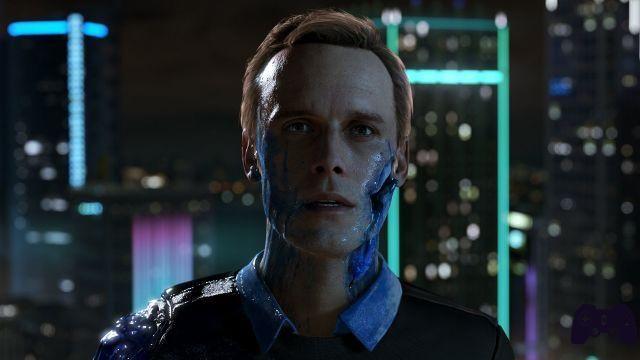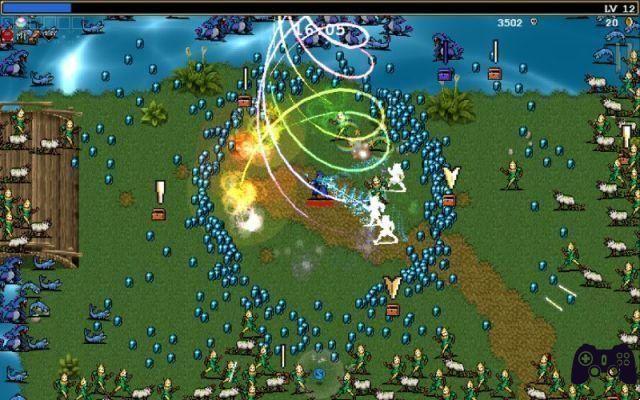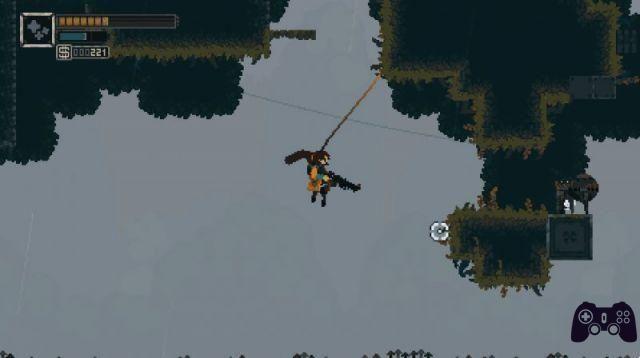About sixty years ago, in the countryside surrounding the small town of Sonobe, a young man who often ventured deep into the bamboo forests came across the entrance to a cave that he had passed several times during his travels. Legend has it that that day he gathered all the courage he had in his body, decided to climb inside and had an epiphany, the vision of a fantastic world entirely dedicated to the great adventure. That boy's name was Shigeru Miyamoto, that vision would become the universe of The Legend of Zelda, while that imaginary world today has come to host green meadows, mountains of fire and infinite oceans, to the point of pointing beyond the blue of the sky. Since then, every time the mosaic of Link's saga is about to be enriched with a new piece, a kind of tremor in the force is perceived, as if an old and respected master were about to return to his chair to reveal a important discovery. And this is precisely the air that is breathed in the skies of the Kingdom of Hyrule, around The Legend of Zelda: Tears of the Kingdom: many hope that the new chapter, escaping the negative meaning of "more of the same", will achieve It's the difficult task of fusing all the great solos of the past into a single great symphony, to communicate to players exactly what they need to hear.
In fact, in recent times we have experienced difficult times, something more worrying than the desire to know if the direct sequel would live up to a masterpiece like Breath of the Wild, or the rumors that tried to compare it with banal downloadable content. . The echo of the global pandemic still resonates with extreme force in the world of video games, as if those years of emptiness had opened an irreparable fracture in the industry, transforming the emergence of new ideas and works of excellence - especially in the weeds of Productions. AAA: in an event more unique than rare. And so this responsibility also ended up falling on the shoulders of Nintendo EPD, a forge called not only to stage what many say could represent Switch's swan song, but to demonstrate to the entire world that there is still the will to dream, to give concrete form to simple but powerful childhood fantasies, like the that gave rise to the saga in a remote cave in the Japanese countryside. It was he who responded to the call. Eiji Aonuma, a captain eager to show the ideas born in the studio during the six years of development, revealing only the minimum and letting, in full respect of tradition, the finished product speak for itself.
A product that, for its part, speaks better than any live broadcast: The Legend of Zelda: Tears of the Kingdom is simply a work that exceeds all possible expectations. Synthesizing all the souls that have guided the saga into a single vessel, it speaks to fans old and new alike, bringing an impressive amount of content to the table and then embroidering its own identity around the evolution of the foundations of the saga. series: the adventure. and marvel. Very Breath of the Wild and a bit of Ocarina of Time, with a strong hint of The Wind Waker and a light touch of Skyward Sword, Link's last journey wants to make a metaphorical bow to the lessons of the works of the past, stealing something of its secrets before inserting its enormous dose of originality, once again transforming the approach of the rules of the series and, in some way, also of the video game itself.
But is it really possible to go beyond a disruptive revolution like the one brought about by its predecessor? This is precisely the big question underlying the Review of The Legend of Zelda: Tears of the Kingdom.
A video game that you play all the time.
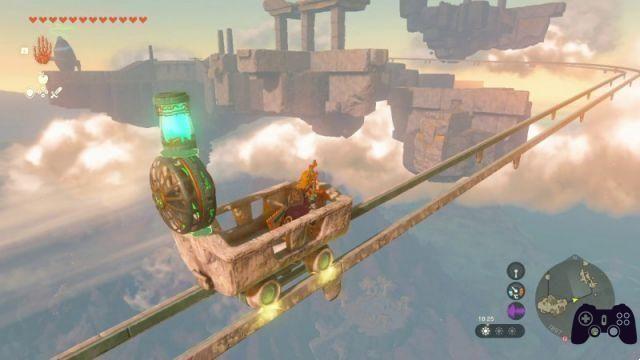
In The Legend of Zelda: Tears of the Kingdom, more than anything, you play. This may seem like a simplistic consideration, but it manages to condense the entire essence of Link's epic, the secret ingredient capable of differentiating it from all the others. Hyrule is a blank canvas, the numerous tools available become a palette and each player is completely free to paint their own masterpiece; there is no right way to play, there is no wrong one, the only constant is that Link is always in the right place at the right time, despite the vastness of the world around him. Not a moment passes without a silhouette on the horizon capturing your attention, and the moment you begin the journey, the embrace of the environment becomes stronger and stronger, raising the curtain every twenty steps on a new interaction, on a passerby. who can't wait to share a secret, about an element that causes you to stray off the beaten path once again. And perhaps this is precisely the magic formula that underpins the spell of the latest Hyrule, which responds uniquely to the player's every stimulus and never fails to provide its own, allowing the heroes to write an original story simply by playing with their imagination.
The kingdom communicates with the player, winks at him continuously, pushes him to ask himself: "Is it possible for this to work?"And, surprise, that interaction always works, transforming any gesture made in the virtual world into a kind of game within the game, taking the brushstrokes of the sandbox that colored Breath of the Wild to transform them into the main element of the painting. If contemporary video games live in well-defined compartments, for example the path, the secondary activities or the creation systems, Tears of the Kingdom is an experience that flows as fluid and cohesive as water, in which everything happens naturally: Curiosity pushes exploration, imagination opens up. Up to dozens of unforeseen solutions, each action is guided by the desire to continue experimenting. The experiments to be carried out are almost unlimited., mixing Link's new abilities and the tools of the Zonau species that color the setting, creating weapons and machinery of all kinds, customizing equipment down to the smallest detail, all without sacrificing the adventurous experience at the heart of Breath of the Wild and really enriching. this with new items, the same ones that history enthusiasts hoped to find under the skies of the new Hyrule.
A Zelda Symphony
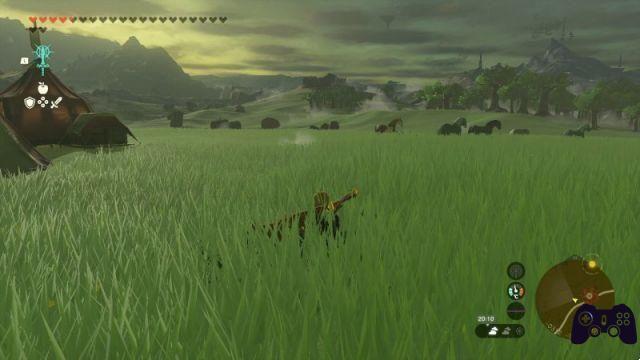
The Legend of Zelda: Tears of the Kingdom, at the same time, is the exceptional synthesis of the entire Legend of Zelda saga. If each inspiration that guided the different episodes of the series can be understood as a single musical instrument, this iteration represents the entire orchestra; the wild freedom of Breath of the Wild, the claustrophobic backgrounds of Ocarina of Time, a hint of darkness of Majora's Mask, the focus on narrative of Skyward Sword: all of these declensions have arrived on the same stage to create a kind of de definitive manual of the essence of the legend of zelda.
The result is a melody that begins withexploration, less guided than ever, linked only to the mental compass that unconsciously drags the player from the islands of the sky to the bowels of the earth. Then comes the descent - and sometimes the ascent - into the hearts of the gods. dungeon, between floating archipelagos, underground labyrinths and real temples that test ingenuity and memory, evolving an ancient drift that was believed to be lost forever. That's when it explodes boss battles, this time unique, scenic and challenging, perfectly musicalized and wonderfully choreographed. To close the circle, the history, always present but never intrusive, willing to frame the gameplay in some moments of great impact, daring more than usual without trying to assume responsibilities outside the scope of the saga.
The Legend of Zelda: Tears of the Kingdom is a very direct sequel: structure and narrative
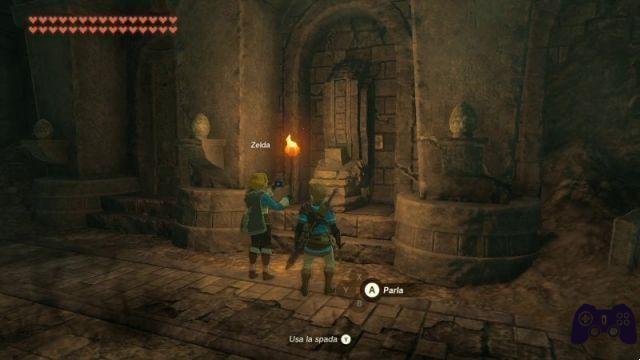
Link walks with Zelda in the basement of Hyrule Castle, deciphering along the way the bas-reliefs that depict the mysterious War of Exile, an ancient conflict triggered by the arrival of the Demon King. This is how The Legend of Zelda: Tears of the Kingdom opens, with a real-time sequence that seems to suggest a new importance for the narrative component, a plot about which we will not make any kind of spoilers. The knight and princess find themselves involved in a new catastrophe, which reawakens an ancient evil that had long been buried beneath Hyrule Castle, a construction that rises menacingly into the sky, casting an ominous shadow over the four. corners of the kingdom. Some time later, Link comes to his senses on an island resting in the clouds, stripped of all his powers and cured thanks to the grafting of a mysterious prosthetic arm: it won't be long before he realizes that there is no more. Princess Zelda. trace, but above all that the world, now trapped in the clutches of the evil entity, needs its intervention more than ever.
Although it has already happened that the imaginary of the series was developed in direct sequels, it had never happened that the continuity was so marked, to the point that The approach is very difficult for anyone who has not experienced the events of Breath of the Wild.. Nintendo EPD has dusted off the idea that decades ago led Pokémon fans to revisit the Kanto region in the Gold and Silver versions, staging a Hyrule that is the same and different at the same time, as familiar as it is alienating. All the well-known characters return, from the brilliant Pruna to the young champions of the different towns, with the important difference that now they have grown up, that the world around them has advanced, transforming each visit to already known places into an often surprise. more shocking than a simple novelty.
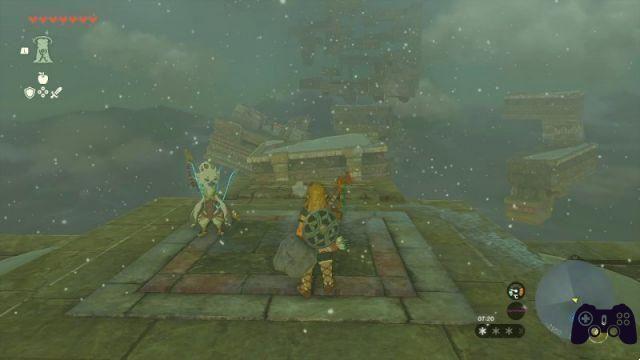
Instead of following only the path of flashback - a resource that by necessity continues to be notably exploited - the plot It also unfolds around events that are happening here and now, leading the supporting characters to travel alongside Link, to follow him directly into battle to fight the demonic entity's army on the front lines, along throughout scenarios that are sometimes darker than standard. what the series has us accustomed to. The fabric of the narrative takes different directions, not only adopting the same radial structure already incorporated in the previous chapter (pushing players to explore the world in the order they prefer) but giving rise to different branches of the main mission. What happened to Princess Zelda? What is happening in the main centers of the kingdom? What secret lies beneath the surface of the kingdom? They are the trails of crumbs that guide the hero's path, that ask the player to actively investigate, to read, to reason, almost always avoiding trusting the cold pins of the map and preferring an experiential approach. If initially these paths smell like something already seen and heard, little by little they reveal a multitude of implications impossible to predict even for the most imaginative enthusiasts.
A new kingdom of Hyrule: the setting
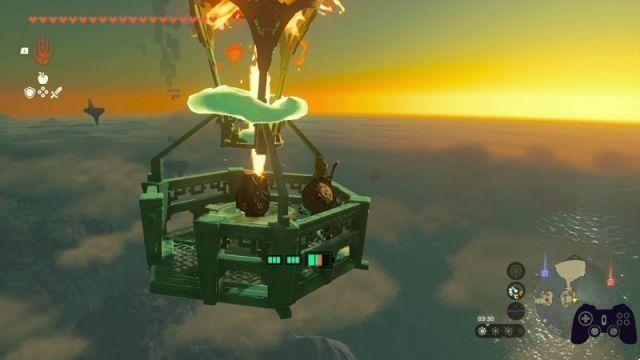
The first impact with Hyrule is strange, disorienting, difficult to read. As soon as you take control of Link, especially when you reach the surface of the kingdom, the atmosphere is that of the most classic of sequels, of a project firmly anchored in the great revolution caused by its predecessor. On the horizon you can immediately see Shrines, lifting a rock the inevitable Korok emerges ready to reward Link for finding it, looking around for a few moments you immediately notice the traditional surveying towers. However, it only takes a handful of minutes to discover that The Legend of Zelda: Tears of the Kingdom adopts a structure similar to that of an onion: initially it hits with a hard shell that makes it impossible to grasp what is hidden inside, until … layer after layer: dozens of innovations are presented capable of changing the face of the experience, completely reversing the focus of the scenario and improving every element introduced six years ago.
At the beginning you breathe the air of the beloved and ancient kingdom of Hyrule, as beautiful as it was and enriched with new points of interest, full of caves and wells ready to open to small and large underground labyrinths, dotted with animals and always full of enemies. Above the protagonist's head they extend as far as he can see. vast floating archipelagos whose structure recovers inspiration from the ocean of The Wind Waker: there are more massive islands and others that are reduced to mere sanctuaries in the clouds, gigantic flying constructions and tiny structures dedicated to the only interaction. To navigate on the wings of the wind there are dozens of different methods, but the most common lies in the exploitation of topographic towers, which now function as cannons capable of shooting Link hundreds of meters high; Then once you set foot on an island, you discover that The only limit to exploration is the player's imagination.. Hot air balloons, drones and even fighter-bombers that work perfectly: taking advantage of the protagonist's new abilities and the dozens of Zonau technologies, it is possible to animate devices that make movement the least of Link's problems, to the point that the innovations designed to Soar the skies ends up having enormous weight even on land. In fact, by launching from the islands it is possible to reach any point of interest that captures your attention in the blink of an eye, transforming the long journeys of Breath of the Wild into a quick and pleasant interlude between activities, relegating the endless climbs. to the simple legacy of a disappeared past... or at least that is what happens in the open air.
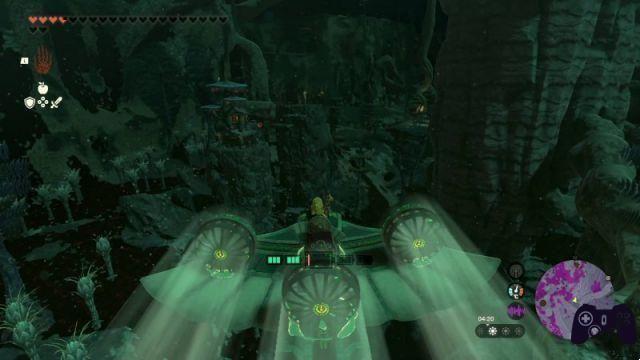
In fact, we wondered if that was all, if the breath of freshness that the new job brought would stop at a handful of islands in the sky, or if there was something else hidden beyond the familiar backgrounds, perhaps just below the surface. Well, upon launching ourselves into the mysterious abysses that dot the regions we discovered that Under the earth's crust there is not simply a small labyrinth, but a much more impressive secret is hidden.. It is an immense, difficult, challenging and exhausting interlude of gameplay, characterized by dedicated opponents, quest chains, rewards and points of interest that lie exclusively within its borders, those of an ecosystem that requires a completely original system and postulates dozens of new rules. If under the skies of Hyrule one always feels in control of the situation, as if one had already mastered the fury of the natural elements, it is here that one returns to point zero of the modern exploration formula.
But even in darkness the new architecture does not end. High in the sky, deep in the earth, hidden in plain sight on the plains of Hyrule: i themed dungeons that have characterized the structure of the series since the first chapter are finally back. And it is a somewhat brilliant return, because the new temples are not afraid to embrace a brave dose of modernity, raising the curtain on impressive views, staging some enigma worthy of the glories of the past and evolving the formula, dosing with the balance between the freedom of the new sandbox approach and the more classic one-way solution. The excellent aesthetic performance is intertwined with the abilities that regulate the interactions with the secondary characters, giving life to dynamic and original game segments that culminate in splendid boss battles, finally also recognizable and well characterized.
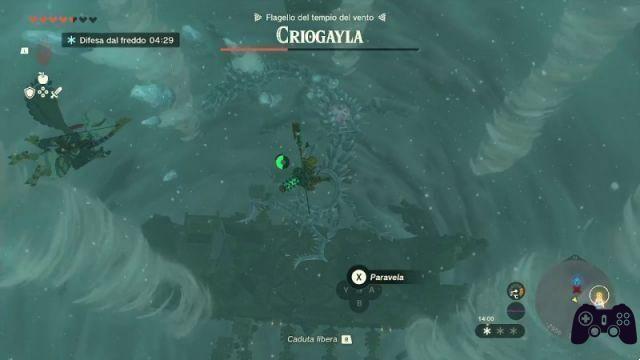
If the raw mass of content alone manages to exceed even the most optimistic expectations, the most surprising element lies in the way in which all these layers of the kingdom of Hyrule intersect and dialogue with each other. There are places on the surface that can only be reached by going underground and vice versa, floating islands hide maps of forgotten treasures in the darkest corners of the underground world, the long path that leads to the doors of the dungeons is an adventure Which involves in the first line the secondary characters and the story element. For its part, the stage is more alive than ever, packed with long side quests intended to characterize even the smallest settlements that color the hills and valleys, ready to respond to the changes brought by Link, embellished with new elements designed specifically to confront them after the conclusion of the adventure.
The real revolution: gameplay
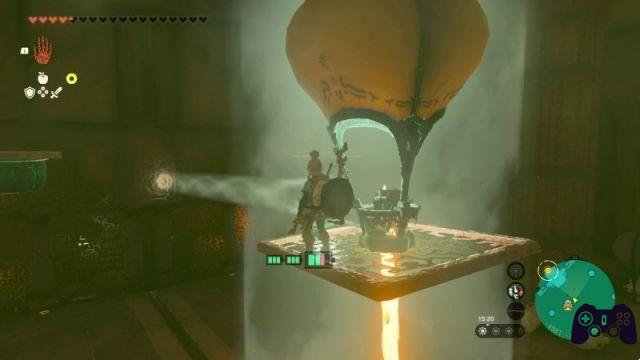
Where The Legend of Zelda: Tears of the Kingdom manages to undermine the identity of its predecessor and, at times, that of the video game itself, is in the fabric of game. It is an impressive construction, in some ways even terrifying, like some kind of physically impossible sleight of hand whose secret seems to lie in real magic. The soul of adventure is in the new. powers linked to Link's prosthetic arm which, after having inherited the functions of its predecessor, introduces a long series of innovations, anchoring itself to a circular selector that once mastered makes it impossible to go back. Iultramano - which, logically, takes its name from the first toy designed by Gunpei Yokoi for Nintendo - allows you to collect, move and merge objects on the stage, for example, placing different trunks to create rafts, or a series of stone slabs to build bridges improvised. He Composer, on the other hand, is used to mix weapons, shields and arrows with each object present in the work - with the sole exception of animals - to create unique equipment or tools with particular effects; Combining simple sticks and rare pieces will result in special swords and magic scepters, while a common bomb flower attached to the tip of an arrow will be enough to demolish a rock wall.
L'Ascent gives Link the ability to swim through any ceiling, as long as it is not too far from the protagonist's head; This mechanic not only allows you to reach the top of the mountains from the depths of the caves, but also turns out to be a key element in solving the puzzles, presenting itself as a conceptually crazy idea that can be integrated into any other contemporary video game. would lead to the complete destruction of systems and levels. He reverto, finally, consists of the power to turn back time in relation to a specific object, whether to return a bullet to the sender or more simply to reconstruct a specific status quo during the exploration phase.
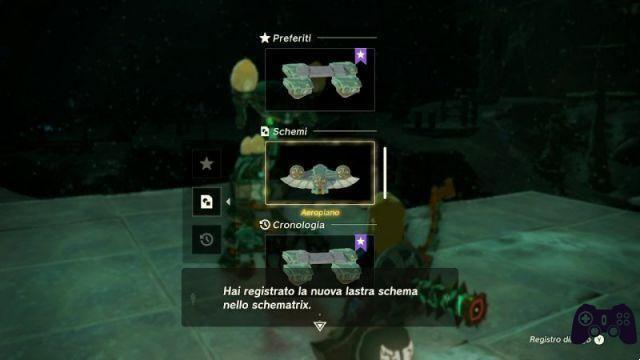
It is much more complex schematic matrix, practically a compendium of all the creations made during the adventure, an archive capable of storing projects and reconstructing the most complex architectures with a single click, even if you do not have the necessary materials. This force is manifested in Zonau's devices: the work is full of small devices that date back to antiquity, a long catalog that includes fans, laser beams, gliders, hot air balloons, springs, etc. And so on, it has more than that. Given that there are around thirty devices in total, all characterized by unique interactions, and that each of them can be merged with other elements using Ultraman, the experience opens up a literally infinite park of solutions. There is only one golden rule: If it is possible to imagine something, it is always possible to do it., no matter if it's a bulldozer, a hovercraft, an exoskeleton or a jet armed with cannons.
In short, do you suddenly find yourself disarmed? All you need is a log of wood and a stone to make a war hammer. Do we have to cross a valley? A glider and a pair of fans can be combined to form a practical airplane. Are the enemies too strong or too numerous? Simply send autonomous flamethrower drones into battle, or perhaps infuse an arrow with a poisonous mushroom to confuse the most dangerous opponent, or opt for hundreds of other possibilities that effectively transform Link's adventure into the definitive interpretation of the immersive sim formula. This is even more true in the orbit of the exploration approach and, above all, of the puzzles, since they can all be easily "broken" without the game changing, adopting a philosophy based on absolute freedom that frontally challenges the traditional role . -playing games. Every time things go as planned, a smile of satisfaction appears on the face, but it is precisely when something unforeseen occurs that work is at its best, generating dozens of unforeseen interactions that lead to sudden, foolish and destined decisions. to resolve themselves. in tragicomic sequences.
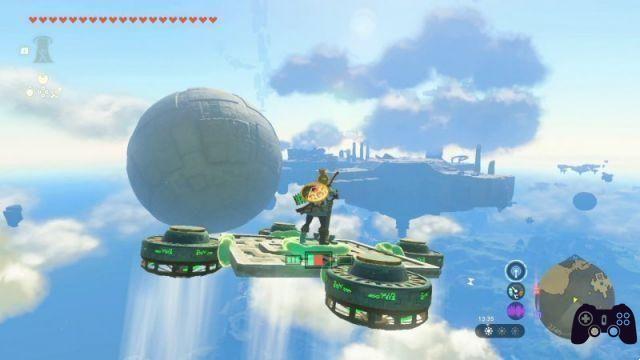
This does not mean that the soul of Breath of the Wild has not survived the transition, on the contrary, it is reserved for all players. total freedom in focus- is a meeting of old mechanics and new aspects designed to please anyone, even veteran enthusiasts who had not fully appreciated the open and wild drift of the previous chapter, even those who normally despise the implementation of crafting. systems. The Legend of Zelda: Tears of the Kingdom is an action and adventure video game, it is one of the most advanced sandbox experiences that exist, it is a classic chapter of the Zelda saga, it is one of the most surprising open worlds found in recent times . Times: All of these souls live in harmony with each other, allowing each player to approach the kingdom from the path they prefer.
Hyrule is a living and ever-changing environment. hand built world that even after a hundred or more hours of play does not stop revealing new secrets, becoming the last thought before closing your eyes and the first when you get out of bed. The Shrines return, there are hundreds of Korok Seeds to recover through small environmental puzzles, there are dozens of mini-games, the grasslands are dotted with fifty-six wells and as many caves that open to dense networks of underground tunnels; You will be able to hunt pirates, build a house, fight alongside other heroes and face groups of enemies that adopt unique strategies. But these turn out to be just raw materials made available by the kingdom, because it is then up to each player to design their own adventure in the big sandbox. Interactions occur in such an accessible, natural and immediate way that it is difficult to become aware of what is really happening. extraordinary what's happening on the screen, until you stop to think carefully about what just happened in the virtual world.
Art and technique from The Legend of Zelda: Tears of the Kingdom
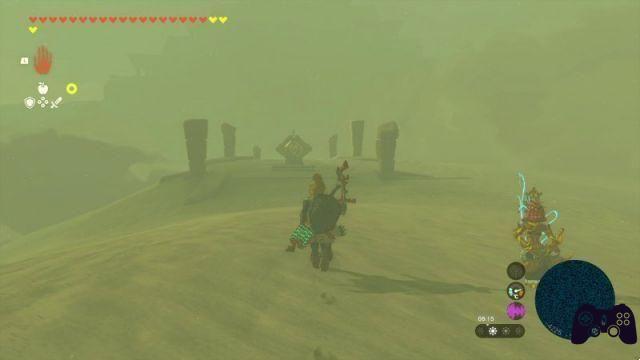
Print of The Legend of Zelda: Tears of the Kingdom., given that it handles the number of interactions it carries on its shoulders surprisingly well, allowing it to merge dozens of objects without performance repercussions, and in some cases it is a mystery how the machine manages to manage such a number of calculations. . The overall situation has visibly improved compared to the time of publication of the previous chapter, especially after a corrective patch released during the review phase that significantly reduced the rare but strong framerate drops that accompanied certain segments in TV mode, limiting the most obvious uncertainties. to pop in phenomena. Said that, some performance issues when the console is in the base it survived, especially when the effects of particles - especially rain - become more intrusive. The hope is that Link's latest adventure is truly the swan song of the Nintendo Switch, a machine that in recent times is struggling to make the excellent productions it houses shine to the fullest, from Bayonetta 3 to this episode of the Zelda saga. - inevitably pushes us to think about how they could be presented on hardware more in line with the times.
Also because Hyrule presents several technical feats, from the science fiction handling of the physics engine, through a surprising system of routines and reactions, to finally arrive at a series of mechanics that still seem out of the reach of other producers, perhaps because they remain caged in the search for photorealism . graphics. Where brute force cannot reach, the paw gets there. art direction, designing convincing characters and opponents, opening glimpses of impressive panoramas, using lighting to caress structures and landscapes that seem straight out of a Hayao Miyazaki animated film. At first it is legitimate to have some doubts, the presentation is not at all impressive as it was in the debut of Breath of the Wild, the deja-vu effect is there and it is felt. Then it happens that entire dungeons are transformed into the arenas of a boss battle - while reinterpreted notes of a classic soundtrack from the past echo in the background - and that's when you realize that The Legend of Zelda: Tears of El Kingdom is the perfect equivalent of what Super Mario Galaxy 2 represented for its predecessor. It is an ode to the philosophy of the Kyoto company as well as a melting pot of ideas destined to remain unsurpassed for a long time, but above all it is the culmination of a different creative path, almost opposite to that pursued by other exponents. of the industry.
Conclusions
Tested version Nintendo Switch digital delivery Nintendo eShop Price 69,99 € Holygamerz.com 10 Readers (352) 9.2 your voteTears of the Kingdom starts from the foundations of the Zelda saga and heads directly towards the sky, bringing together in a single large mosaic all the pieces that moved the soul of the series. The tradition of the past meets a freedom foreign to contemporary video games, bringing to the table a literally infinite amount of possibilities to interact with a living realm brimming with content; In short, it is a work that constantly responds to each stimulus that the player receives and at the same time never stops providing new stimuli. The return of dungeons, the world hidden beneath the surface of Hyrule and the floating island archipelagos are nice touches of novelty, but it is the gameplay experience, which sets a new standard without comparison, that marks the real revolution. Some critics often state in a derogatory tone that Nintendo video games are intended only for young people; The truth is that The Legend of Zelda: Tears of the Kingdom is a production capable of making you feel like a child again, but above all, of reawakening the desire to play.
PRO
- Amount of original content beyond any possible expectation.
- Revolutionary sandbox approach, with unlimited gameplay possibilities
- The dungeons are back, in a modern and aesthetically impressive version
- Every element of Breath of the Wild has been improved or enhanced.
- Mechanics so accessible it's hard to realize how incredible they are
- State-of-the-art soundtrack, direction and art direction.
AGAINST
- It puts future chapters of the saga in a very uncomfortable position.
- Switch is really at its limit and it is impossible to do more




